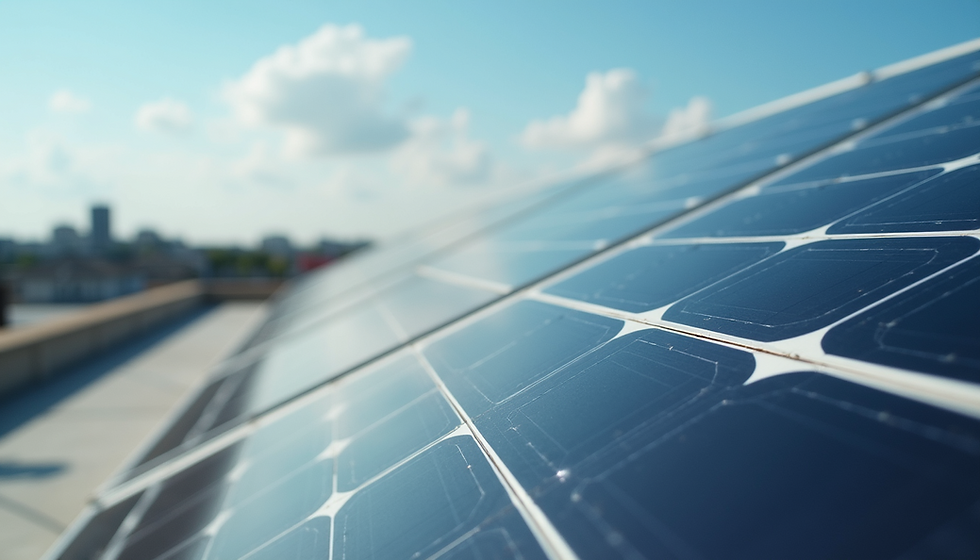Electric Vehicles and Charging Infrastructure: Understanding the EV Ecosystem
- May 31
- 3 min read
The rise of electric vehicles (EVs) is not just a trend—it’s a revolution. As the world races to cut carbon emissions and shift away from fossil fuels, EVs are emerging as a cornerstone of clean mobility. But the road to widespread EV adoption isn’t just about building better cars—it’s also about building the infrastructure to support them.
In this blog, we’ll break down the EV ecosystem, explore the types of electric vehicles, explain charging infrastructure and technologies, and assess the challenges and future developments shaping this dynamic industry.

Understanding Electric Vehicles
EVs are powered entirely or partially by electricity. They come in several types:
Battery Electric Vehicles (BEVs): Fully electric, with no internal combustion engine. Examples: Tesla Model 3, Nissan Leaf.
Plug-in Hybrid Electric Vehicles (PHEVs): Combine an electric motor with a gasoline engine. Can run on electricity alone for shorter distances.
Hybrid Electric Vehicles (HEVs): Cannot be plugged in; powered by a combination of an internal combustion engine and regenerative braking.
The shift toward EVs is driven by multiple factors:
Zero tailpipe emissions
Lower fuel and maintenance costs
Supportive government incentives
Advancements in battery technology
The Role of Electric Vehicle Charging Infrastructure
Just as petrol stations were essential for internal combustion engines, charging stations are critical to EV adoption. The types of EV charging are generally categorized into:
1. Level 1 Charging:
Uses a standard 120V outlet
Slowest (adds about 2-5 miles of range per hour)
Ideal for overnight home charging
2. Level 2 Charging:
Uses a 240V outlet
Adds 10-60 miles of range per hour
Common in homes, offices, parking lots, and public stations
3. DC Fast Charging (Level 3):
High-voltage direct current
Can charge 80% in 20–40 minutes
Found on highways and major routes
Ultra-fast chargers are also emerging, especially with the development of EVs capable of handling higher voltages (e.g., Porsche Taycan, Lucid Air).

Public vs. Private Charging
Private charging: Home-based systems, usually Level 1 or 2. Offers convenience and lower electricity rates.
Public charging: Operated by networks such as ChargePoint, Tesla Superchargers, Ionity, and Electrify America. Often includes subscription plans or pay-per-use models.
Emerging trends include:
Wireless charging: Using inductive plates in the ground.
Battery swapping: Popular in markets like China (e.g., NIO), where users swap depleted batteries for charged ones in minutes.
Barriers to EV Infrastructure Development
Despite the surge in EV popularity, infrastructure development faces several challenges:
Grid strain: High EV adoption could overload local electricity grids without smart load management.
Charger availability: Rural and underserved areas lack adequate charging stations.
Standardization: Different plugs (CCS, CHAdeMO, Tesla) complicate interoperability.
Cost: Installing fast chargers and upgrading grids can be capital intensive.
The Future of the EV Ecosystem
Smart Charging & V2G (Vehicle-to-Grid): EVs can interact with the grid, storing excess renewable energy and feeding it back when needed.
Solar-integrated chargers: Reducing grid dependence by using solar panels for clean, on-site energy.
Government Policies: Initiatives like the U.S. National EV Infrastructure (NEVI) program and Europe’s Alternative Fuels Infrastructure Regulation (AFIR) are pushing major funding into public charging.
EV growth is not just about cars—it’s a systems-level change involving utilities, smart grids, urban planning, and clean tech innovation.

The Bottom Line
Electric vehicles are transforming how we move—and how we power our mobility. As battery technology improves and charging infrastructure expands, EVs will become not only more accessible but also more integrated into our broader sustainable energy goals.
At NRGIZED, we see electric vehicles as more than transportation—they’re a critical node in the clean energy network of the future.






Comments